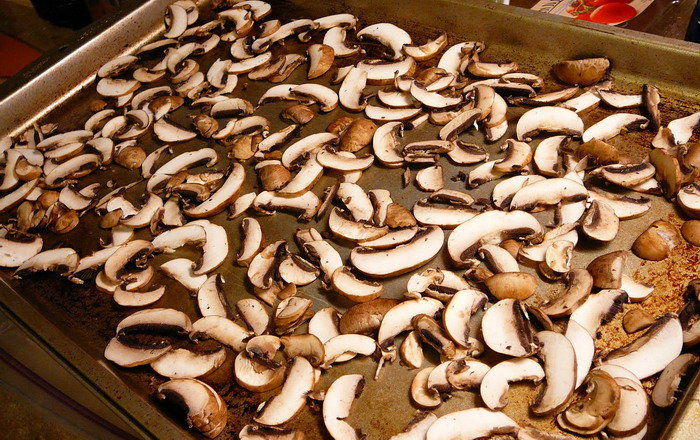Dried mushrooms perfectly retain their taste and aroma until the next season and at the same time take up little space.
However, not all edible mushrooms can be dried. Many agaric mushrooms contain bitterness that does not disappear during the drying process. Such mushrooms are not suitable for drying.
Fresh, strong, healthy mushrooms, not damaged by worms, are selected for drying.
If possible, it is best to choose certain types of mushrooms for drying: boletus, boletus, lines, morels and, of course, porcini mushrooms. Before drying, mushrooms must be processed in a certain way. First, they are thoroughly cleaned of dirt and sand. Then the mushrooms are cut into thin plates for drying. At the same time, it is strictly forbidden to soak mushrooms in water!

Drying can be done in various ways: near the stove, in the oven or in direct sunlight, strung on a thread or laid on a baking sheet pre-lined with parchment paper. Ready mushrooms should be packed in cloth bags and stored in a place protected from moisture and light.
In jars, boxes, plastic bags and other containers where air does not pass, dried mushrooms will become unusable very quickly. And it is best to use such mushrooms for making fragrant soups.
In order to avoid contamination, it is better to dry the mushrooms on special devices: sieves, gratings, braids strung on a thread or on pins mounted on wooden racks or on the needles of a mushroom dryer.
Mushrooms are considered dried if they feel dry to the touch, light, bend slightly, and break with some effort. Well-dried mushrooms taste and aroma resemble fresh ones. The “yield” of dry mushrooms averages 10–14% by weight of raw peeled ones. Thus, out of 10 kg of fresh mushrooms, only 1–1,4 kg of dried mushrooms are obtained.
In the oven, you can dry all tubular and agaric mushrooms, tinder fungi. You can not dry morels in the oven.
When drying in the oven, the mushrooms are laid out in a thin layer on specially made or ready-made grills, installed in place of ordinary baking sheets. The temperature in the oven should be between 60-70 ° C, and in order for the air to circulate in it constantly, the door should be kept ajar. As the mushrooms dry, the grates are reversed from top to bottom.
In urban settings and for modern cuisine, this method of drying mushrooms is probably the most common and simple: ovens (and grates in them) are in every home. If there are few grates (or there are none, it happens), then you can independently make 2-3 grates according to the size of the oven so that they can be installed instead of baking sheets. Lattices can be made from any large-mesh wire mesh.
You can also use baking sheets if you don’t have wire racks. Mushrooms are selected by size (large ones are cut into pieces) and laid out on baking sheets. In this case, the mushrooms should not come into contact with each other, and in the oven it is necessary to ensure air circulation (open the door ajar).
First, the mushrooms are dried at a temperature of 45 ° C. At a higher initial temperature, protein substances are released on the surface of the mushrooms and then dry, which worsens the further course of drying and gives the mushrooms a dark color. Mushrooms at the same time become so soft that it is impossible to use them for food. Only after the surface of the mushrooms dries up and they stop sticking, the temperature can be raised to 75–80 ° C.
The duration of pre-drying and drying of mushrooms cannot be determined exactly. If the caps and plates of mushrooms are the same size, they dry out at the same time. Dry mushrooms are removed, and the rest are dried, turning them over from time to time.
Dried mushrooms absorb moisture from the surrounding air very well (especially if they are prepared in the form of mushroom powder), easily become damp and moldy. In addition, they quickly absorb foreign odors. Therefore, dried mushrooms should be stored in dry, well-ventilated areas, and best of all in moisture-proof bags or in tightly closed glass or metal jars. Dried mushrooms can also be stored in gauze or linen bags, but, strictly, in a well-ventilated place and separately from products with a pungent odor.
If for some reason the mushrooms become wet, they should be sorted out and dried.
To preserve mushrooms for a long time, it is more convenient to place the mushrooms immediately after drying (while they still retain their fragility and heat) in hermetically sealed glass jars. Banks are sterilized at a temperature of 90 ° C: half-liter – for 40 minutes, liter – 50 minutes.
To suck air out of cans, you can use the following method. A little alcohol is poured onto the inner surface of the lid, it is lit and the jar is immediately closed. When burning alcohol, almost all the oxygen in the jar is consumed, as a result of which the mushrooms will not become moldy, even if they were not dried enough and they were laid in a damp room.
Before cooking food from them, mushrooms are washed with a brush, cleaning dust and dirt, and poured for several hours with water to swell, and then boiled in the same water.
It is even better to soak dried mushrooms in milk or milk mixed with water. Mushrooms blackened during drying should be washed well before being put into the soup so that they do not give the soup a black color. A decoction of morel mushrooms is poured out without trying; in other cases, it is left to settle possible sand, filtered and used to make soups, sauces or gravies.









